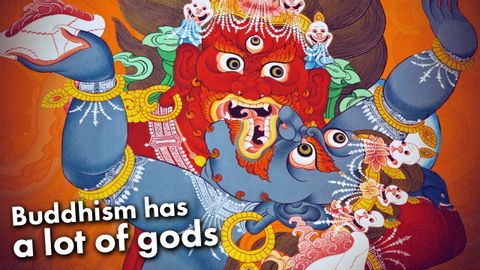佛教是無神論宗教嗎? (Is Buddhism an Atheistic Religion?)
 沒有此條件下的單字
沒有此條件下的單字US /spɪˈsɪfɪk/
・
UK /spəˈsɪfɪk/
US /ˌmɛdɪˈteʃən/
・
UK /ˌmedɪ'teɪʃn/
- n. (c./u.)默想;冥想;沉思;禪修;引導式冥想
US /ˈʌltəmɪt/
・
UK /ˈʌltɪmət/
- adj.最終的;基本的;根本的;最好的;最終的;最大
- n.飛盤爭奪賽;極致;終極
US /ˈkɑnˌtɛkst/
・
UK /ˈkɒntekst/
- n. (c./u.)上下文 ; 背景 ; 來龍去脈;背景;環境;語境
